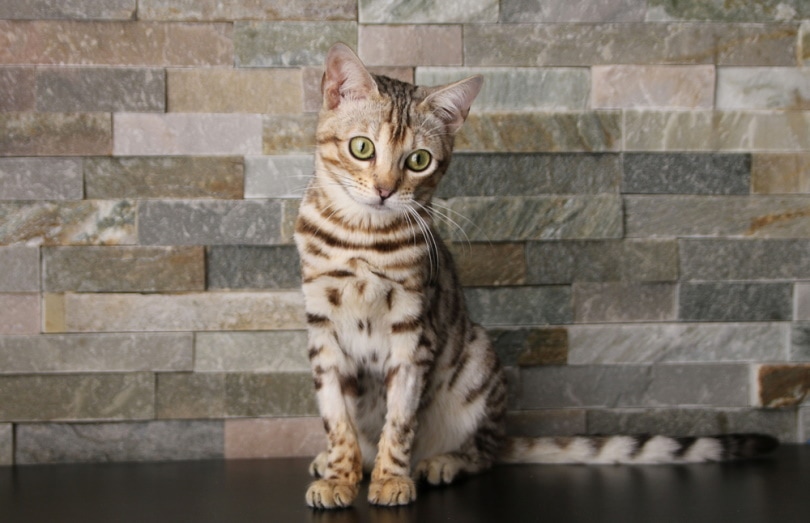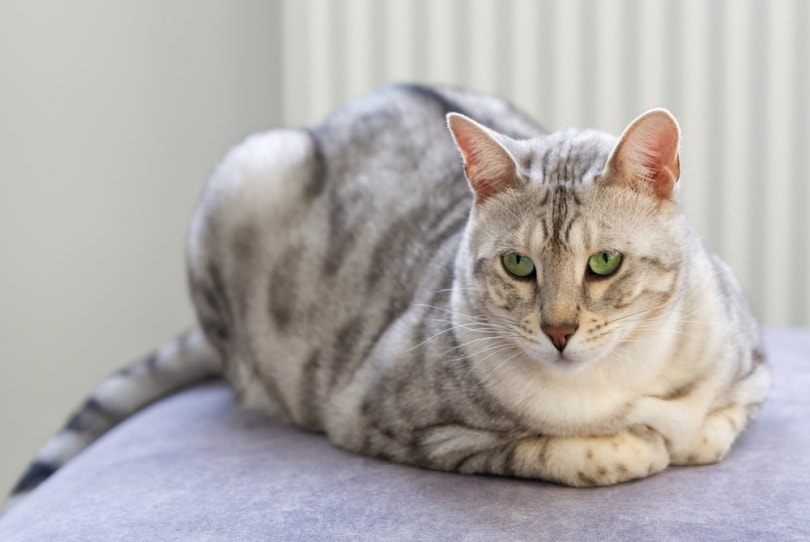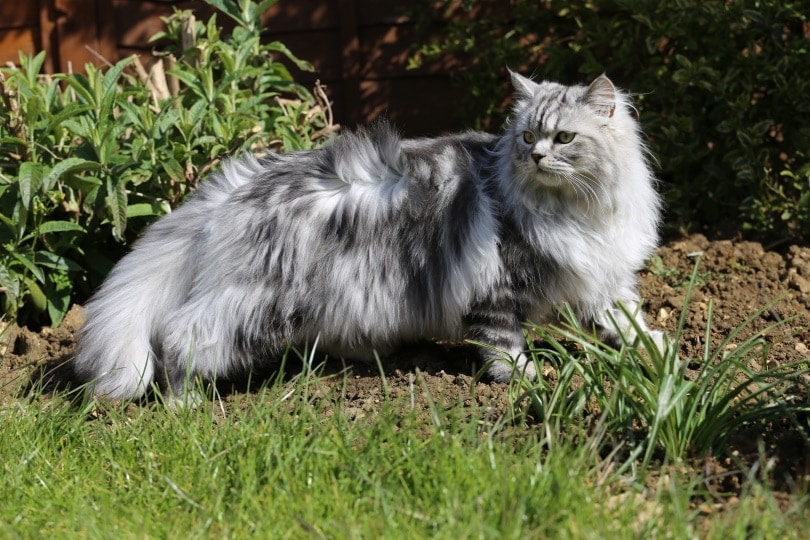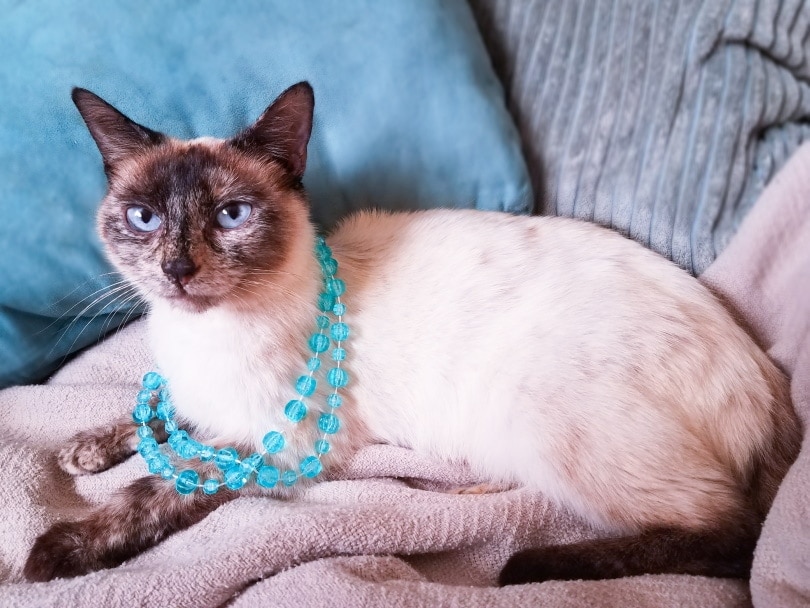Snow Bengal Cat: Facts, Pictures, Origin & History

Updated on

Click to Skip Ahead
If you see a Snow Bengal, you might wonder, “Is that a tiny leopard or a housecat?” While the exotic-looking felines are, in fact, domesticated, they have a relatively recent “wild” past. They make wonderful, loyal pets for homes that can meet their unique needs. Let’s learn more about how the breed started, why Snow Bengals are popular, and what potential owners can expect from this breed.
Breed Overview
| Height: | 13 – 16 inches |
| Weight: | 8 – 17 lbs |
| Lifespan: | 10 – 16 years |
| Colors: | Brown spotted, seal lynx point, sepia, silver, mink |
| Suitable for: | Experienced cat owners |
| Temperament: | Intelligent, energetic, playful |
Bengal Characteristics
 The Earliest Records of Snow Bengals in History
The Earliest Records of Snow Bengals in History
This breed is a newcomer to the domestic cat world. The first Bengal cat came to be in 1963 when a housecat and an Asian snow leopard bred. The result was an exotic-looking yet tamer cat. The first three generations of domestic cat/Asian snow leopard hybrids are called F1, F2, and F3. (The “F” stands for “filial.”) These early generations are also called Foundation Generations. The F1–F3 hybrids do not make good pets and are used for breeding. Any kitties that are F4 or later are purebred Bengals.
Snow Bengals are a subset of the Bengal breed. The cats are the subsequent generation of an Asian leopard cat and Siamese or Burmese pairing. “Snow” refers to their coats, which have a cream background and contrasting pattern.
https://www.instagram.com/p/CMCqzVGpZ3o/?utm_source=ig_web_copy_link
How Snow Bengals Gained Popularity
The breeding of Bengals became more formalized in the 1980s. The breed’s exotic looks and unique personalities draw in would-be cat owners. Bengals remain a specialty breed and are priced accordingly. You’ll need to find a breeder if you want a Bengal kitten, as you aren’t likely to find one at a shelter.
Formal Recognition of Snow Bengal
While the first F1 Bengal dates back to the 1960s, breeding took almost two decades to begin in earnest. The International Cat Association (TICA) recognized Snow Bengals in 1986. The breed achieved TICA’s championship status five years later. Cats that meet TICA’s breed standard will have exotic looks paired with domestic personalities. Judges look for athletic, muscular Snow Bengals that are curious and graceful. Exemplary examples of the breed will have a smaller head and relatively large, round eyes. Of course, a Bengal that doesn’t have a show-standard appearance will still make an excellent pet!
Top 3 Unique Facts About Snow Bengals
1. Bengals Love Water
Unlike most other cat breeds, Bengals will actively seek out water to play in. Don’t be surprised if your Bengal joins your pool party or hops in the bath with you!
2. Bengals Are Illegal in Some Places
Unfortunately, the domesticated Bengal carries the stigma of its hybrid ancestors. While F1–F3 hybrid Bengals are illegal in certain areas, some jurisdictions also ban purebreds. You can’t take your Bengal kitty with you if you go on vacation to Hawaii or New York City.
3. Bengals Have Unique Coats
Bengals have either marbled or spotted “rosette” patterned coats. They are the only domestic cat breed that has these leopard-like spots.

Does a Snow Bengal Make a Good Pet?
Snow Bengals are a combination of intelligence and athleticism. They are curious and always on the go. A Snow Bengal won’t do well home alone for long periods, but they get along well with other cats and dogs after a proper introduction. However, the cats have a strong prey drive. Bengals are not suitable for homes with pet birds, hamsters, fish, and other small animals.
Bengals are eager to please and thus highly trainable. If you don’t have a lot of room in your home for your Bengal to exercise, you can leash train your kitty. They’ll benefit from daily walks and the chance to explore outside. A child can quickly become a Bengal’s best pal since the cat is up for hours of interactive play.
If you want a cuddly lap cat, you should look for other breeds. Bengals generally like don’t being held or carried. They show their loyalty by following you from room to room and enjoy being in your presence.
 Conclusion
Conclusion
Bengals are a new breed of domestic cat, formally recognized by TICA in the 1980s. The first three generations of Asian leopard cat/domestic cat pairings are hybrids. These early F1–F3 kitties do not make good housepets. Thoroughly research Bengal breeders before buying a kitten to ensure you have an F4 or later—a true purebred Bengal.
Bengal cats need mental and physical stimulation to stay happy and out of trouble, and they are more independent and not the cuddliest felines out there. However, they love their humans and make excellent pets.
Featured Image Credit: TheCats, Shutterstock
 The Earliest Records of Snow Bengals in History
The Earliest Records of Snow Bengals in History








